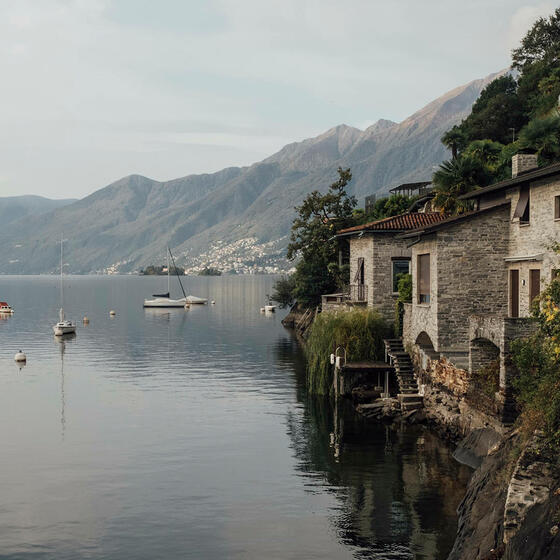The lesser-visited Italian-speaking (and eating) region of Switzerland is as rich in natural beauty as it is in gastronomic innovation
04 April, 2023
In partnership with
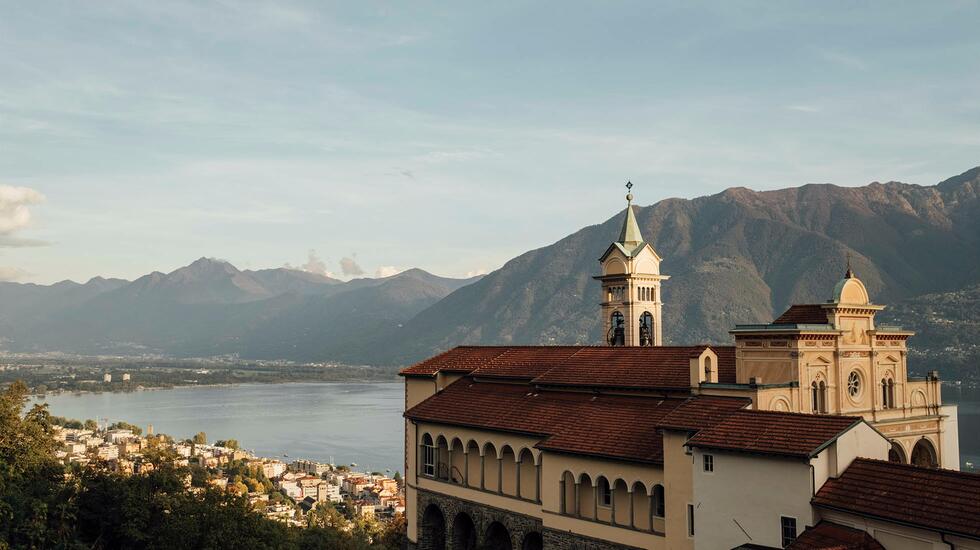
A
visit to the Brissago Islands, a short boat trip across Lake
Maggiore from the resort towns of Ascona and Locarno, is a great
way to kick off a culinary exploration of Switzerland’s
Italian-speaking canton, Ticino. The larger of the two islands, San Pancrazio,
is dominated by a botanical garden planted with more than 2,000
Mediterranean and subtropical species from five continents. It’s
the place to taste ripe guava, inhale lemongrass and marvel at a
rare and ancient Chilean coconut palm. Blessed with a unique
microclimate thanks to its geography, Ticino is one of
Switzerland’s warmest regions, so just as palm trees grow in
abundance lakeside, sun-loving fruit trees flourish. The abundance
of life that this sun-kissed, valley-riven and lake-adorned region
supports foretells the variety on local menus that travellers can
expect.
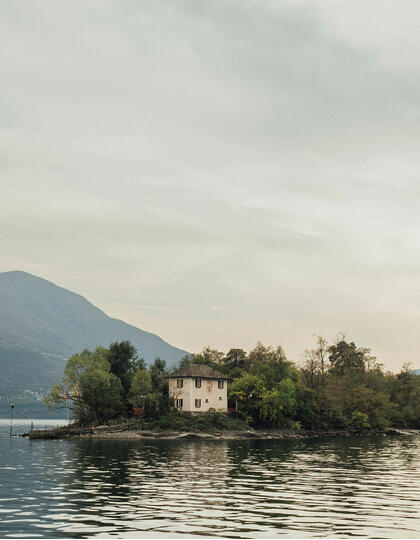
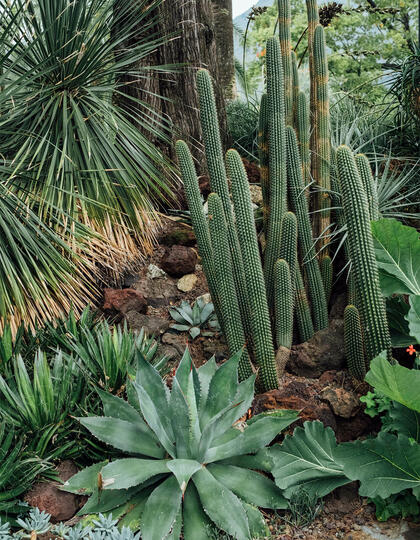
San Pancrazio’s botanical gardens is planted with
subtropical flora.
It’s on San Pancrazio, visiting a restaurant and hotel tucked
into the neoclassical Villa Emden, that we learn about Ticino’s
longstanding reputation as a bohemian, bucolic utopia. In the early
decades of the 20th century, with much of Europe under the dark
cloud of oppression and war, this peaceful and naturally blessed
region in the southern foothills of the Alps became a haven for
artists, iconoclasts and proto-hippies, including writer Hermann
Hesse and artist Paul Klee. “In Ticino, we have a special name for
these incoming early-20th-century bohemians,” explains Simone
Schmid, our guide. “We call them ‘balabiotts’, which means ‘dancing
naked’ in the Tessin dialect.” This refers to a Belgian-founded
utopian colony whose residents revered nature, grew all their own
food, advocated a vegetarian diet and (yes) danced naked on the
pastures of the Monte Verità, the mountain looming above the town
of Ascona.
Ticino’s glamorous, glossy lakeside resort towns of Locarno and
Ascona famously combine Swiss perfectionism with Italian dedication
to la dolce vita, but the region’s hippy heart has never stopped
pulsing. Today, it beats louder than ever, as young, innovative
hoteliers, food growers, artisans and chefs rediscover these
fertile valleys. Step into any bar in Locarno and you’ll find a
local brew named Sambì proudly on offer alongside kombuchas and
colas. This popular low-alcohol fermented elderflower drink is
produced by two young brothers, the winemakers Gabriele and Martino
Bianchi. Ticino’s winemaking scene is famously a family affair,
with more than 3,600 producers cultivating small, steep plots.
White merlot is the speciality, but for the Bianchi brothers it is
their grandmother’s Sambì recipe that has seen their label stocked
in hip bars and organic grocers as far away as Zurich, Lucerne and
Geneva.
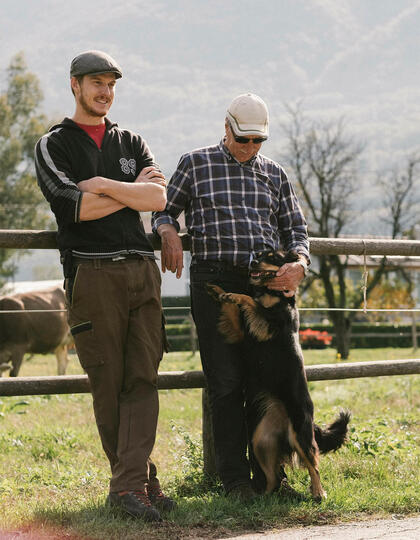
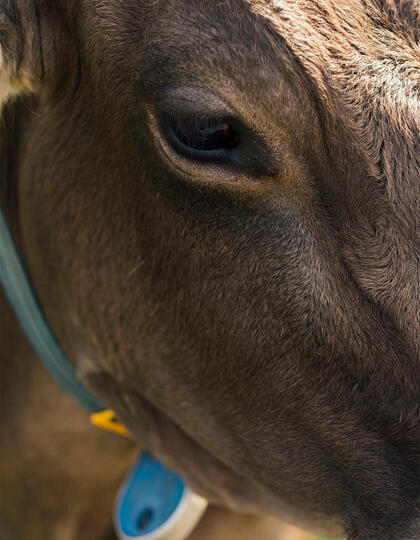
Malteria Ticinese is a pioneer of the local craft brewing
scene, but started as a side hustle for the family farm, Masseria
Ramello.
This is a pattern we start to recognise as we travel around
Ascona and Locarno: young people returning from stints abroad at
world-class restaurants, wineries and hotels, to bring a next-gen
energy and new verve to a heritage family farm or winery, or set up
their own business in their backyard.
On the Magadino plain, we chat to Adrian Feitknecht, who has
established a wildly successful side hustle at his family farm,
Masseria Ramello, by opening Ticino’s first malthouse.
With a local craft brewing scene blossoming, Malteria
Ticinese cuts down on food miles for local breweries, and
Feitknecht and his business partner, beer sommelier Manuel
Bolliger, offer tastings of local pours. Masseria Ramello is a
B&B and organic farm that has been in the family for
generations. “We only grow organic barley, meaning that local
breweries can make organic beers with our products,” says
Feitknecht. “The local brewing scene is growing and we have big
plans for the malthouse – and fun is very much part of the plan. We
wanted to do something that hadn’t been done here before.”
It’s a similar story at Birra Bozz, a craft brewery in Gerra Piano. Here,
fresh-faced brewer Richy Bozzini bottles unpasteurised, unfiltered
beers that have been made using locally sourced, organic
ingredients. The brewery produces over 20 natural brews, which we
spot in local shops, restaurants and bars across the region.
Just down the road from the family farm is another local
culinary institution, Tigusto, which has been working with local organic
soya producers for over 30 years, making tofu, tempeh and seitan
with Swiss spelt flour – artisan, plant-based foodstuffs that form
part of Ticino’s unique gastronomic heritage.
There is a reverence for the land and what it produces that
unites young producers and the older generation here in Ticino,
something we come across when we visit the Vergeletto Mill, where
slow food pioneer Illario Garbani demonstrates how farina bóna, a
finely milled cornflour that lends a comfortingly malty, toasted
flavour to dishes and products, has been milled for generations.
Across Switzerland, farina bóna is an ingredient whispered about in
hallowed tones. In Locarno, the family-run Gelateria Solduno sells farina bóna-flavoured ice
cream, and as far away as Zurich, the chocolatiers at bean-to-bar
La Flor have
incorporated this uniquely Swiss ingredient into a limited-edition
farina bóna bar – a cult hit.
In true Ticino style, we travel seamlessly from this historic
milltown to a sleek glass-and-concrete complex on the outskirts of
Locarno, housing a winery, Vino Hauser, a florist and a hit new restaurant,
Osteria
Bisnona, where we eat the most memorable meal of our stay.
Founded by four well-travelled hospitality high-flyers, the ethos
is to celebrate, discover and support the produce, farmers and
artisans in this uniquely blessed region. Ticino-born chef Kira
Ghidoni has worked with top London chefs including Simon Rogan and
Robin Gill, but believes the Ascona-Locarno area is the most
exciting place she could locate herself as a chef. “It’s thrilling
to see what’s happening here at the moment, with so many young
people doing cool things, returning to their roots and
rediscovering the culinary heritage of Ticino,” says Ghidoni. “By
being here right now, there’s a real sense that we’re part of
something.”
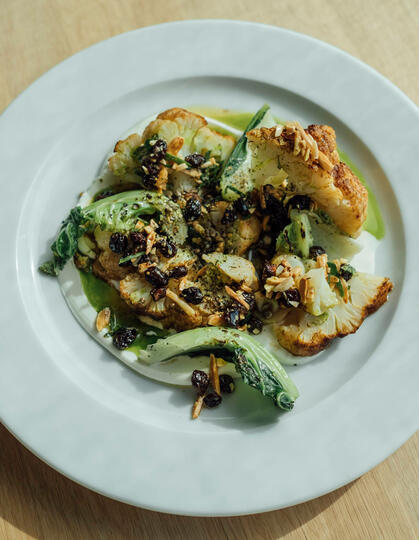
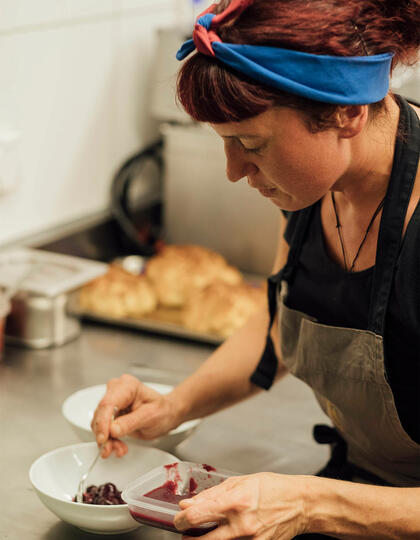
Osteria Bisnona, a Contone restaurant helmed by local chef
Kira Ghidoni.
At Osteria Bisnona, we’re firmly instructed to visit the
teahouse at Fondazione Monte Verità before we leave the region.
This foundation, hotel and teahouse is what the original 1900s
hippy commune has evolved into, with travellers and locals
wandering around the tea plantation and Zen garden, before sipping
a matcha in the Japanese-style tea pavilion. Drinking in views of
the lake, the mountains and the fertile valleys in between, still
sated from the dishes that originate here, one thing is abundantly
clear: the balabiotts were right about Ticino.

Fly direct from London Heathrow to Zurich with SWISS. From
there, jump on the slow-paced, scenic Gotthard train to reach Locarno.
Get unlimited travel on public transport across the canton with
the Ticino Ticket, a free digital travel pass available to
visitors staying overnight in hotels, youth hostels and campsites
in the region.
Ready to plot a food-focused adventure through Ticino? Visit
myswitzerland.com to get started.
